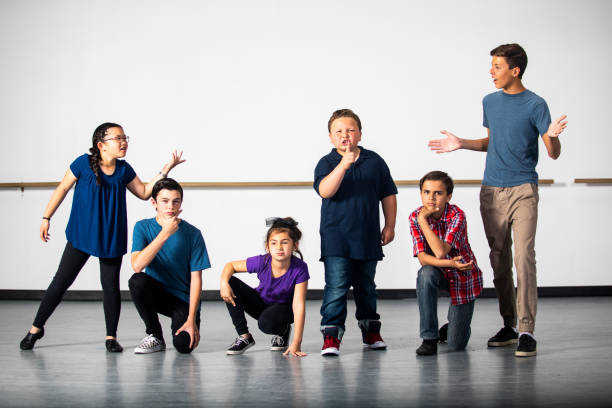The opening remarks often determine one's own style. The style varies depending on the personality of the lecturer. For example, Feng Gong belongs to the close type, Zhao Benshan belongs to the amazing type, and Guo Da belongs to the hysterical type.

”A good start is half of success", everyone knows this sentence, but what kind of opening is a good opening? Today, when Tiancheng ke, I will share with you 10 opening methods that lecturers must use, hoping to help you!
1. Straight to the point--express today's theme bluntly
To get straight to the point is to say what you have to say, go straight to the subject, give the audience certainty, make them calm and at ease, and be mentally prepared. For example, if you are a trainer and you are invited to work for the company's internal staff for a "corporate trainer training”, you can say this: "Good morning, everyone! Today we are here to exchange a topic called "Corporate Trainer Training". The outline of this course was sent to everyone half a month ago. At the beginning, our project promotion team initiated a proposal to study this course. To be honest, I would order something like this and rely on this for dinner. If everyone learns it, I will lose my job! Since everyone has this need, then I will give it up and teach everyone my housekeeping skills. Can you give me a little applause for your cooperation? ”This is straightforward.
2. Team Building-let everyone get to know each other
The opening of team building is one of the commonly used methods. Through the opening of team building, everyone can get to know each other and turn from a scattered sand into a solid whole, which is very conducive to the development of training work. Team building Opening role Team building is a very effective opening method and can play a good role: ① Active atmosphere ②Easy to observe ③ Stimulate competition. The main tasks of team building are to start the team name, select the captain, set the team name, and identify the players. You can also draw team flags, formation songs, etc., and screen and edit them according to actual operating conditions.
3. Introduce yourself-you can make everyone remember you
Self-introduction is also a good way to start, and it can play a good role, that is, it can make everyone remember you, and it can be introduced into training and learning. Two ways are recommended. ① Introduction to the five elements: What is your last name? →What is it called? →What word? What's the point? Greetings! ②The method of association with work: name → unit → Specialty → relationship with everyone. Work association emphasizes letting others remember themselves and making beneficial connections with more people, so as to achieve the purpose of working hand in hand to create success.

4. Question guidance-stimulate curiosity and let everyone quickly participate in it
There must be logic in the opening questions. We will not have illogical questions in our daily lives, but in the classroom of our trainers, illogical questions often appear, leaving students in the clouds and unable to touch their minds. How can trainers improve it? ①the problem guides it like a mountain apart. ② At the beginning of the question, the things around the students make the students feel closer. ③ After the question is guided, the opening is fooled. ④The problem guides it to satisfy the appetite.
5. The opening of the story-to help students remember and learn
People will never forget the story for a long time, because the story allows people to participate in the emotional journey of other people, and these emotional experiences will greatly help students remember and learn. Lecturers can share and design stories or experiences related to training topics. There are many stories to choose from at the beginning of the story. The main point of the opening of the story is to choose a meaningful story that matches the situation on the scene, and at the same time it should be thought-provoking and trigger follow-up thinking. To tell a story, there must be five elements: when, where, who, what, and why. Every story should include these five items in order to be clearly expressed.
6. The opening of the game-let the training site heat up
Games are a way to easily heat up the training site. Trainers can accumulate more games, and when they arrive for on-site training, they can easily come and interact with each other as they please. Trainers must consider the characteristics of the students before the start of the game, and choose different games according to different students. For example, the logistics staff is relatively shy, which is not conducive to the use of explosive games, while the sales staff are very open, but it is not suitable for quiet games.

7. Data opening-can produce extremely huge effects
Many topics can also be imported with data. For example, when you want to explain the topic of “How to Improve Production Efficiency", you can say this: "This month, our product output has increased again. In addition to the first three months, this quarter has increased by 15% compared to the same period last year. We are making progress. But I compared other workshops and found that the growth rate of the other workshops was more than 25%. Compared with ourselves, we are making progress, and compared with others, we are regressing. Let me talk about a question of how to improve production efficiency." Using data to start the explanation can sometimes have extremely huge effects.
8. The opening of the case-it is a good way to mobilize the enthusiasm of the students
The opening of the case is a good way to mobilize students' enthusiasm, arouse interest, and stimulate thinking. The main points of the opening of the case are now explained as follows: ①The case itself must be close to the daily work of the students, otherwise no matter how mysterious or wonderful the case you use, it will be useless. ②the case must be conflicting. Students listen to the case to listen to the conflict. Only when there is a conflict can it be interesting and lively. ③The case should be able to trigger thinking and discussion, and in the process of setting up the case, it should be able to trigger thinking and discussion to facilitate the development of later training.
9. Opening of current affairs-let students benefit from it
The opening of current affairs requires the lecturer to have a strong understanding and integration ability, to be able to give one-to-one explanations based on random events around him, and to be able to carry out on-the-ground with reason, so that the students can benefit from it. Take a paragraph of current affairs that the author has applied to illustrate.
10. Opening Digressions-Opening Disciplinary Requirements
Opening disciplinary requirements tips: ① Don't be too strong in making requests, such as “Can everyone look at me?" This will give me more confidence and at the same time let me know who I am talking to.” ②The benefits I bring to everyone are: first, I will be very happy; second, I know what marketing is; third, I will quickly improve my performance. In order to help everyone get these three benefits, I also have a few small consensus points that need to be reached with everyone: first, the mobile phone is adjusted to vibrate; second, you can't smoke. If you smoke, you can only inhale it in, not spit it out.



Leave a Reply